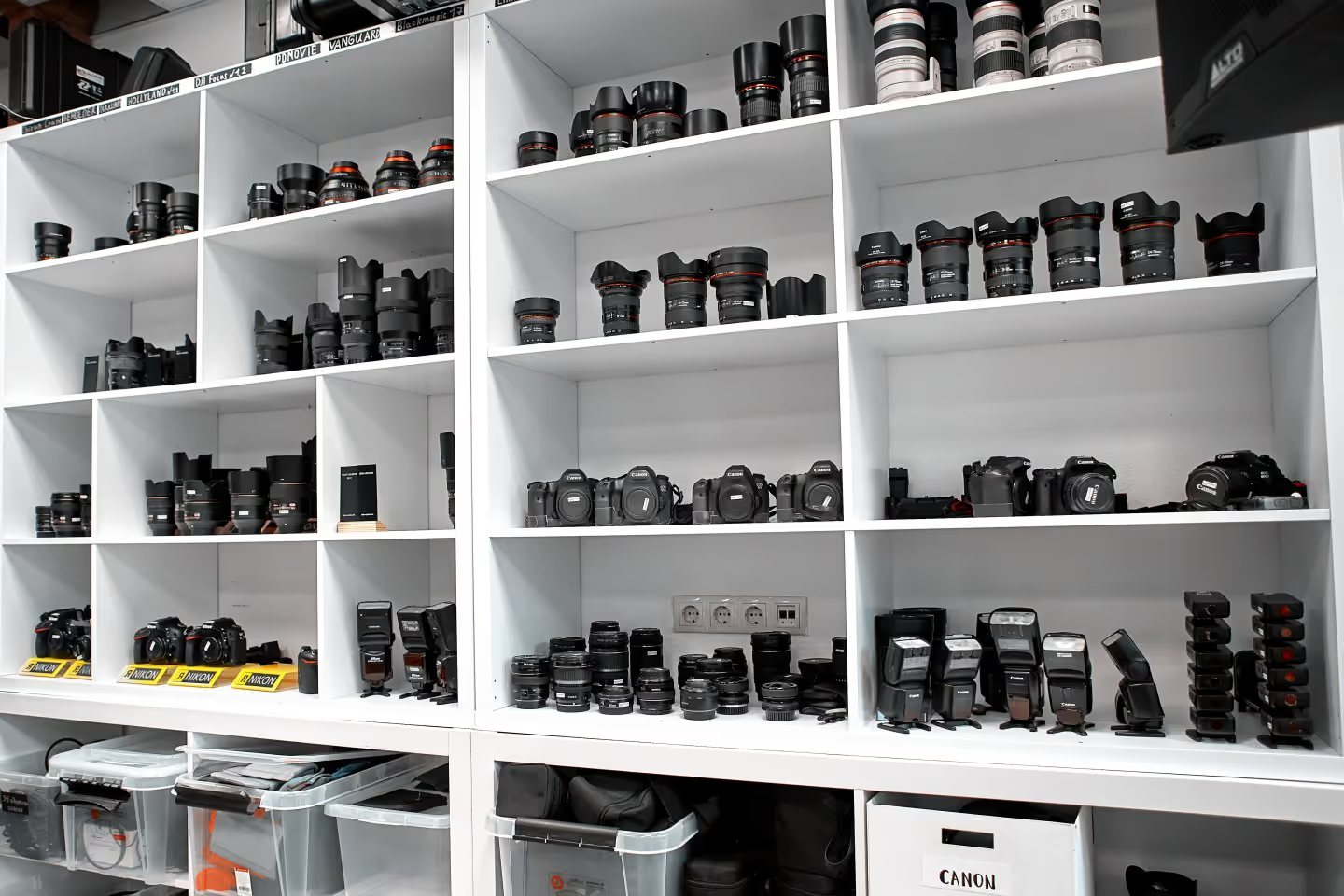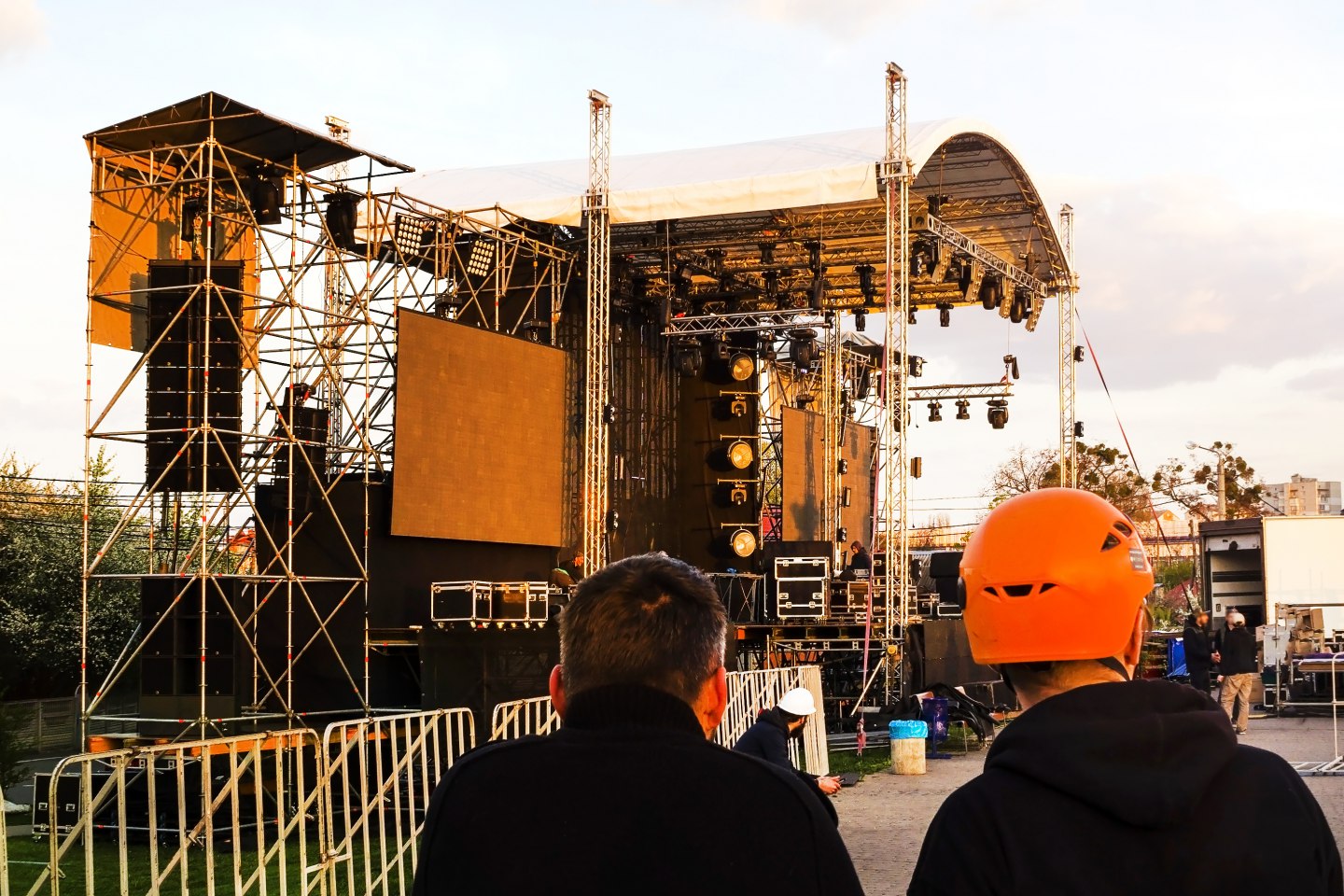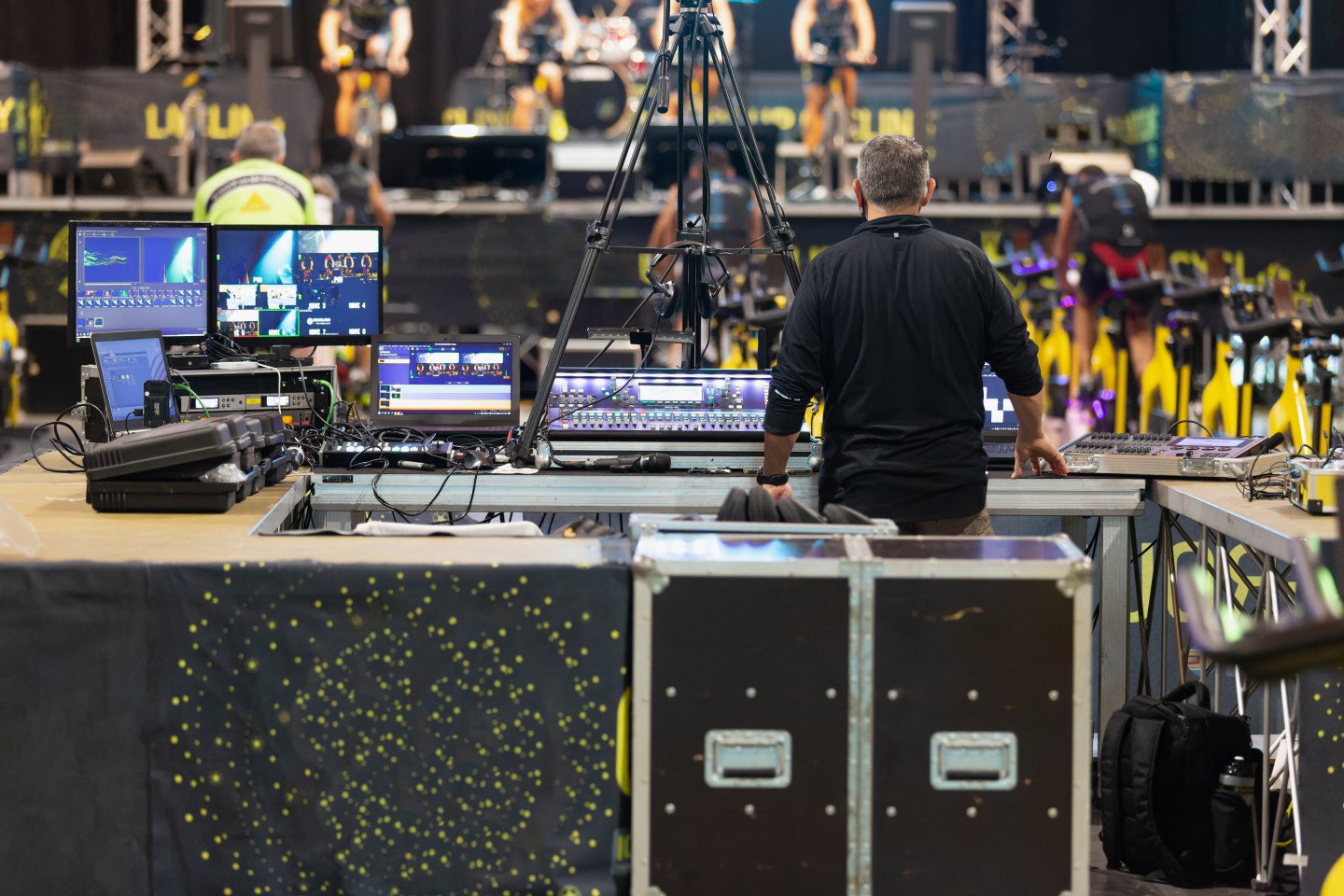Equipment Rental KPI for the Event Industry

Effective equipment rental KPI (Key Performance Indicators) are essential for evaluating the success and efficiency of event equipment rental businesses. These metrics provide valuable insights into various aspects of operations, from utilization rates to customer satisfaction. By monitoring and analyzing equipment rental KPIs, businesses in the equipment rental sector can make informed decisions that enhance performance, streamline processes, and ultimately drive profitability.
In this article, we will delve into the critical KPIs for the equipment rental industry, explaining their importance and how they can be leveraged to achieve operational excellence.
1. Understanding Equipment Rental KPIs
2. Key Performance Indicators to Track
3. Best Practices for Measuring KPIs
4. Improving Equipment Rental KPIs
5. Real-World Examples and Case Studies
Understanding Equipment Rental KPIs
What Are KPIs?
KPIs, or Key Performance Indicators, are measurable values that demonstrate how effectively a company is achieving its business objectives. In the context of event equipment rental, KPIs help an event equipment rental company track and assess various aspects of the business, such as equipment utilization for events, maintenance costs, and customer satisfaction. These metrics provide a clear, quantifiable way to gauge performance and identify areas for improvement.
By focusing on the right KPIs, event equipment rental businesses can optimize their operations, improve service quality, and increase profitability. Understanding and leveraging these KPIs is crucial for making data-driven decisions that drive growth and efficiency in the highly competitive event equipment rental market.
Importance of KPIs in Equipment Rental
KPIs play a pivotal role in the event industry by providing a structured approach to measure and improve the performance of event equipment rentals. They help identify trends, inefficiencies, and opportunities within event operations. For instance, tracking the utilization rate of event equipment can reveal whether assets are being underused or overused during event seasons, guiding inventory and purchasing decisions. KPIs like maintenance costs, downtime, and operational costs can highlight areas where operational efficiencies can be gained specifically for event rentals.
Moreover, customer satisfaction metrics can help gauge service quality for event execution and pinpoint areas for enhancement. By consistently monitoring these KPIs, event equipment rental businesses can make informed, strategic decisions that lead to increased profitability, better resource management for events, and enhanced customer satisfaction. In essence, KPIs serve as a roadmap for achieving operational excellence and sustaining growth in the competitive event equipment rental market.
Common KPIs in Equipment Rental
Several KPIs are crucial for monitoring and optimizing event equipment rental operations. Among the most common are utilization rate, maintenance costs, and revenue per unit. The utilization rate measures how often equipment is rented out for events compared to its availability, providing insights into asset efficiency. Maintenance costs track the expenses incurred in keeping equipment operational for events, highlighting potential areas for cost savings. Revenue per unit examines the income generated by each piece of equipment during events, indicating profitability and informing pricing strategies.
Additionally, customer satisfaction scores are vital for assessing service quality and identifying areas for improvement in event delivery. Other important KPIs include downtime, which measures periods when equipment is not operational between events, and fleet age, which can impact maintenance needs and rental rates. By regularly tracking these KPIs, event equipment rental businesses can make data-driven decisions that enhance efficiency, reduce costs, and improve overall profitability for their event equipment rentals.
Key Performance Indicators to Track
Utilization Rate
The utilization rate remains one of the most critical KPIs for event equipment rental businesses. It measures the percentage of time equipment is rented out for events compared to the total time it's available. A high utilization rate indicates that assets are being effectively used during event seasons, contributing to revenue generation.
Conversely, a low utilization rate suggests underutilization, leading to idle equipment that doesn't generate income. To calculate the utilization rate, divide the number of days the equipment is rented for events by the total number of days it's available, then multiply by 100 to get a percentage. Regularly monitoring this KPI helps businesses make informed decisions about inventory management, pricing strategies for event rentals, and marketing efforts targeted towards specific event types.
By optimizing the utilization rate, event equipment rental companies can maximize their return on investment, improve overall operational efficiency, and positively impact rental revenue during peak event seasons.
Downtime Analysis
Downtime analysis is an essential KPI for event equipment rental businesses, focusing on the periods when equipment is not operational or available for rent between events. This metric helps identify the root causes of downtime, whether due to scheduled maintenance, repairs, or logistical delays during event setup and breakdown. Understanding and minimizing downtime is crucial because it directly impacts revenue generation and customer satisfaction during events.
Additionally, monitoring maintenance expenses is vital to ensure they don't excessively affect profits. To perform a downtime analysis, track the duration and frequency of equipment outages, categorizing them by cause (e.g., scheduled maintenance, repairs due to wear and tear, logistical delays). This information can highlight patterns and areas needing improvement, such as preventive maintenance schedules or inventory management practices to ensure equipment arrives on time for events.
By reducing downtime and balancing maintenance expenses, businesses can enhance equipment availability for events, increase rental income, and improve service reliability. Regular downtime analysis enables event equipment rental companies to make data-driven decisions that boost operational efficiency and profitability throughout the year.
Maintenance Costs
Maintenance costs are a vital KPI in the event equipment rental industry, as they directly affect profitability and operational efficiency. This KPI tracks the expenses incurred to keep equipment in good working condition, including routine maintenance, repairs, and parts replacement to ensure equipment functions flawlessly during events. High maintenance costs can indicate aging equipment or inefficiencies in the maintenance process, while low costs might suggest well-maintained assets or underreporting of issues.
To monitor maintenance costs, keep detailed records of all maintenance activities and expenses for each piece of equipment. Analyzing these costs helps identify trends and areas where cost savings can be achieved, such as optimizing preventive maintenance schedules to prevent unexpected breakdowns during events, or investing in more durable equipment suited for the demands of specific event types. By keeping maintenance costs in check, event equipment rental businesses can ensure their fleet remains reliable and available for customers, ultimately enhancing profitability and customer satisfaction.
Additionally, managing maintenance costs effectively contributes to a higher customer lifetime value by fostering long-term relationships with satisfied customers, which is especially crucial in the B2B event equipment rental industry.
Best Practices for Measuring KPIs
Setting Realistic Goals
Setting realistic goals remains crucial when measuring KPIs in the event equipment rental industry. Unrealistic targets can lead to frustration and demotivation among staff, while achievable goals foster a sense of accomplishment and drive continuous improvement. To set realistic goals specific to event equipment rental, consider factors like:
- Seasonality: Event rentals tend to fluctuate throughout the year. Analyze historical data to understand peak event seasons and adjust goals accordingly.
- Equipment Type: Different types of event equipment may have varying utilization rates. Set goals specific to each equipment category.
- Client Base: Account for the types of events your clients typically host. This can influence the rental duration and impact utilization rate goals.
By considering these factors, you can establish Specific, Measurable, Achievable, Relevant, and Time-bound (SMART) goals. Regularly review and adjust these goals based on performance and market conditions. By setting and pursuing realistic goals, event equipment rental businesses can steadily improve their KPIs, driving operational efficiency and profitability throughout the year.
Data Collection Methods
Effective data collection methods are essential for accurately measuring KPIs in the event equipment rental industry. Consistent and reliable data is the foundation for making informed decisions. Here are some key considerations for event equipment rentals:
- Utilize Rental Management Software: Implement software specifically designed for event equipment rentals. These systems can track equipment usage for specific events, maintenance records, and downtime between rentals.
- Real-time Tracking: Integrate GPS or RFID technology to track equipment location and ensure on-time delivery and retrieval for events.
- Customer Feedback Surveys: Gather feedback after each event to understand customer satisfaction with equipment and service.
By combining these methods, you can obtain a comprehensive view of your event equipment rental operations. Ensure data is accurate and complete through regular updates and audits. This high-quality data allows you to make data-driven decisions that enhance efficiency, reduce costs, and improve customer satisfaction for your event rentals.
Analyzing and Interpreting Data
Analyzing and interpreting data is a critical step in measuring KPIs for event equipment rental businesses. Once data is collected, it must be systematically analyzed to extract meaningful insights specific to event rentals. Here's how to approach this:
- Segment Data by Event Type: Analyze data by categories like weddings, conferences, or trade shows. This can reveal usage patterns and inform targeted marketing efforts.
- Track On-time Delivery Rates: Monitor how often equipment arrives on time for events. Delays can negatively impact customer satisfaction.
- Identify Equipment Issues: Analyze maintenance data to pinpoint equipment prone to breakdowns during events.
Contextualize the data to understand its implications for your event equipment rental business. Regularly review these analyses with your team to ensure everyone is aware of the insights and can contribute to data-driven decision-making. By thoroughly analyzing and interpreting data, event equipment rental businesses can make informed decisions that enhance operational efficiency and drive growth in the event rental market.
Improving Equipment Rental KPIs
Streamlining Operations
Streamlining operations is vital for improving equipment rental KPIs and achieving operational excellence. Start by identifying and eliminating inefficiencies in your workflow. Utilize technology to automate repetitive tasks, such as scheduling maintenance or tracking equipment availability. Implementing a centralized inventory management system can help keep track of all assets, reducing the likelihood of errors and lost equipment.
Optimize your logistics to ensure that equipment delivery and pickup are timely and efficient. Regularly review and refine your maintenance processes to minimize downtime and extend the lifespan of your equipment. Foster a culture of continuous improvement among staff by encouraging feedback and implementing best practices. By streamlining operations, equipment rental businesses can reduce costs, improve equipment utilization, and enhance customer satisfaction, leading to better overall KPI performance and increased profitability.
Investing in Technology
Investing in technology is a key strategy for improving equipment rental KPIs. Advanced software solutions can automate and enhance various aspects of your operations, from inventory management to customer service. Implementing an integrated rental management system allows for real-time tracking of equipment usage, maintenance schedules, and availability, which helps optimize asset utilization and reduce downtime.
Additionally, predictive maintenance technologies can foresee potential equipment failures, allowing for proactive repairs and minimizing unexpected outages. Customer relationship management (CRM) systems help track customer interactions and satisfaction, providing valuable data for improving service quality. Mobile applications can streamline the rental process by enabling on-the-go reservations and payments.
By leveraging technology, equipment rental businesses can achieve greater operational efficiency, improve customer experience, and make data-driven decisions that positively impact their KPIs and overall business performance.
Employee Training Programs to Enhance Customer Satisfaction
Employee training programs are essential for enhancing equipment rental KPIs. Well-trained staff are more efficient, make fewer errors, and provide better customer service, all of which contribute to improved business performance.
Start by identifying the key areas where training is needed, such as equipment handling, customer interaction, and software usage. Develop comprehensive training modules that cover these areas and ensure that all employees receive regular and updated training. Hands-on training sessions can be particularly effective, allowing employees to gain practical experience and confidence in using the equipment and systems.
Additionally, consider offering specialized training for roles that require advanced skills. Regularly assess the effectiveness of your training programs through performance reviews and feedback. By investing in employee training, equipment rental businesses can boost productivity, enhance service quality, and ultimately improve their key performance indicators, leading to greater operational success and customer satisfaction.
Real-World Examples and Case Studies
Successful Equipment Rental Companies
Several equipment rental companies have achieved remarkable success by effectively leveraging KPIs to drive their business strategies. For instance, United Rentals, one of the largest equipment rental companies globally, uses a comprehensive set of KPIs to monitor equipment utilization, maintenance costs, and customer satisfaction. By focusing on these metrics, they have optimized their fleet management, reduced downtime, and improved customer service.
Another example is Sunbelt Rentals, which employs advanced technology to track real-time equipment performance and availability. This data-driven approach has enabled them to streamline operations, enhance asset efficiency, and achieve higher profitability. Smaller rental companies, such as Rent-All Equipment, have also seen success by implementing KPI tracking and making strategic adjustments based on the insights gained.
These real-world examples demonstrate that with the right focus on KPIs, equipment rental businesses of all sizes can achieve operational excellence and sustained growth.
Lessons Learned from Industry Leaders
Industry leaders in the equipment rental business have valuable lessons to offer when it comes to leveraging KPIs for success. One key takeaway is the importance of data-driven decision-making. Companies like United Rentals and Sunbelt Rentals have shown that by consistently monitoring and analyzing KPIs, businesses can identify inefficiencies, optimize processes, and make informed strategic decisions. Another lesson is the value of investing in technology. Advanced software solutions and real-time tracking systems enable precise monitoring of equipment performance and utilization.
Additionally, industry leaders emphasize the significance of maintaining a well-trained workforce. Comprehensive training programs ensure that employees are knowledgeable and efficient, leading to better service and operational efficiency. Lastly, focusing on customer satisfaction metrics helps companies understand and meet customer needs more effectively. By adopting these best practices, equipment rental businesses can enhance their KPIs, driving operational excellence and sustained growth.
Future Trends in Equipment Rental KPIs
As technology and market dynamics evolve, future trends in equipment rental KPIs will likely focus on advanced analytics, predictive insights, and sustainability. One emerging trend is the use of artificial intelligence (AI) and machine learning to predict equipment failures and optimize maintenance schedules. This proactive approach can significantly reduce downtime and improve equipment utilization rates.
Additionally, real-time data analytics will become increasingly important, enabling businesses to make instant decisions based on current operational data. Another trend is the growing emphasis on sustainability metrics. Companies will start tracking KPIs related to energy consumption, carbon footprint, and waste management to meet regulatory requirements and customer expectations.
Furthermore, customer experience metrics will gain prominence as businesses strive to enhance service quality and satisfaction. By staying ahead of these trends, equipment rental companies can ensure they leverage the most relevant KPIs to drive operational efficiency and growth.
FAQ
Frequently asked questions
No items found.
Previous blog posts

Rental Reservation Software for the Event Industry
Rental Reservation Software for the Event Industry


